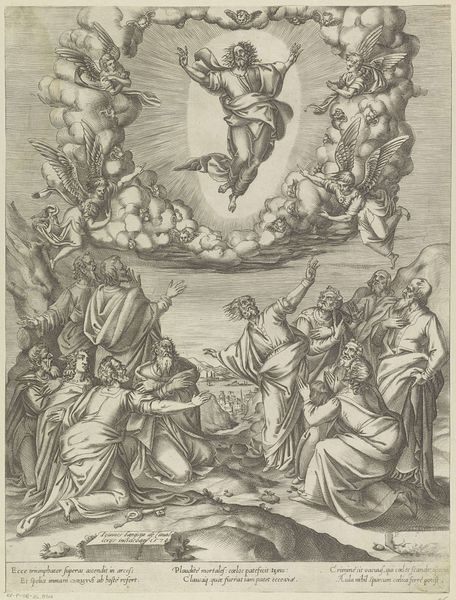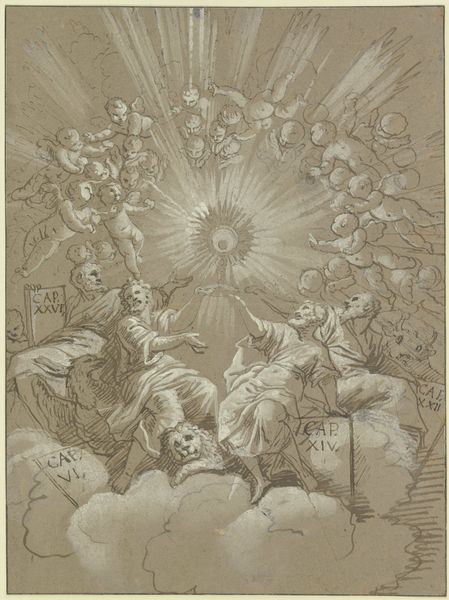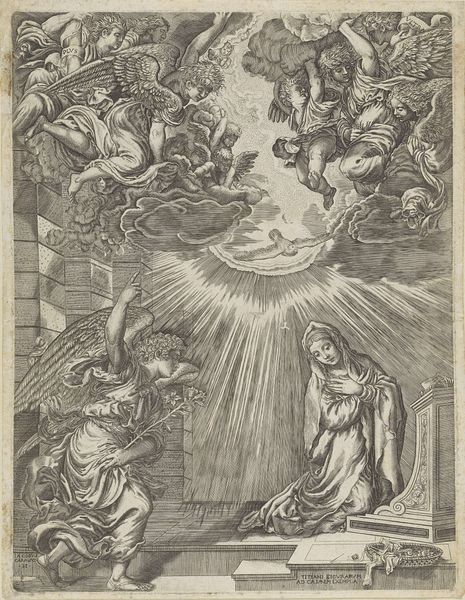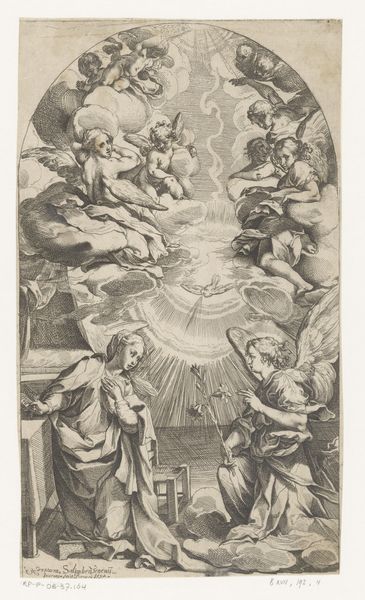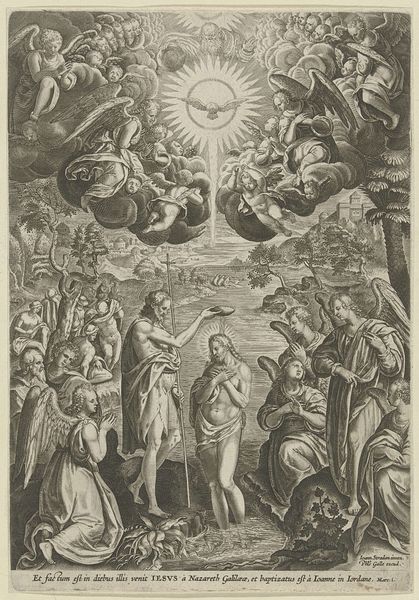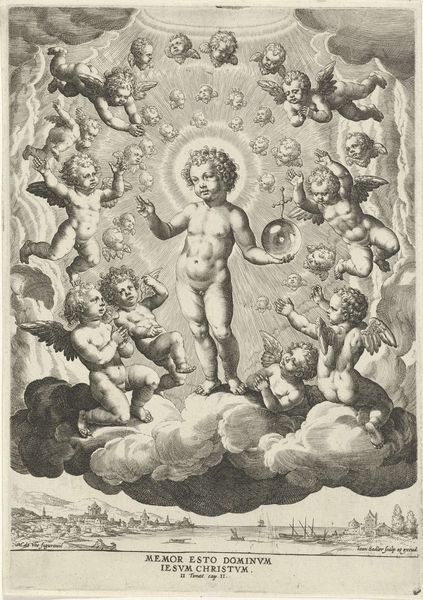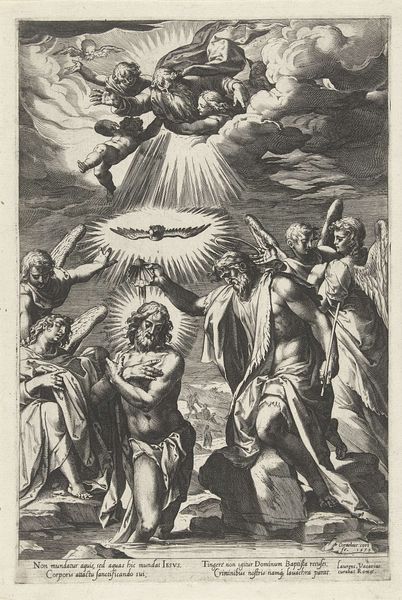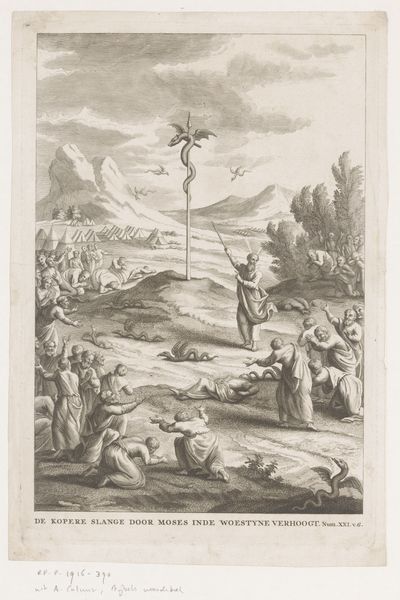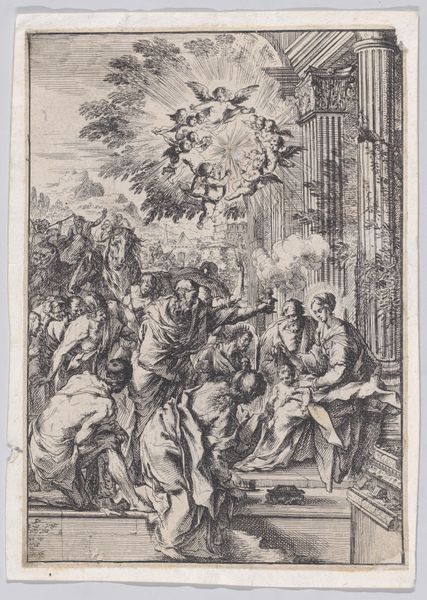
drawing, print, engraving
#
drawing
#
baroque
# print
#
engraving
Dimensions: 9-1/2 x 9-3/4 in
Copyright: Public Domain
Editor: This is an engraving called "Monstrance Surrounded by Cherubs," made sometime between 1600 and 1800 by an anonymous artist. It's currently at the Metropolitan Museum of Art. The cherubs floating around this elaborate object give the piece such a dreamy, devotional quality. What stands out to you in this work? Curator: It’s interesting you say dreamy, because it hits me as almost theatrical. Think of it as Baroque stagecraft! The monstrance is the star, bathed in this ethereal light. It is an instrument intended to inspire awe. The cherubs are really more like stagehands, arranging props and adjusting the lighting, no? Consider the context, too—religious imagery during this period was meant to evoke powerful emotions. Does it evoke powerful emotion for you? Editor: I think so! I mean, seeing all that divine symbolism – the grapes, the wheat – feels quite overwhelming. But theatrical stagecraft also feels so performative, artificial even, which seems at odds with religious feeling. Is that intended, or is it more about elevating the holy? Curator: Aha, there’s the beautiful tension! It's both, isn't it? Religion *is* performance, a ritual enacted in a heightened way. Artifice elevates; the sheer craftsmanship involved suggests the devotion poured into making something worthy of the divine. Consider that contrast –the anonymous artist putting everything into an image to the glory of God. Editor: That's fascinating. I guess I hadn't really thought about the "performance" aspect of religious devotion before. It makes you see this image differently! Curator: Indeed! I came seeing a carefully staged production, but you nudged me to also consider this dream-like elevation to a divine realm. I appreciate your insightful curiosity!
Comments
No comments
Be the first to comment and join the conversation on the ultimate creative platform.
